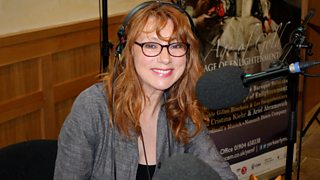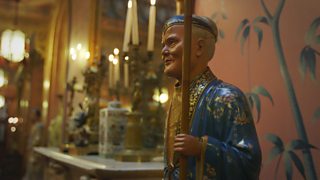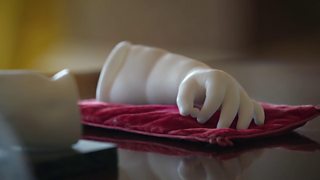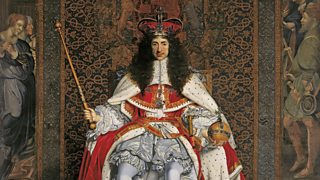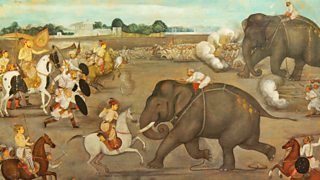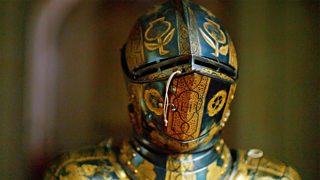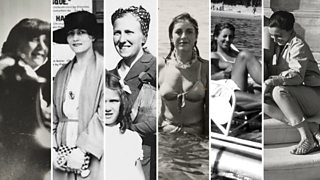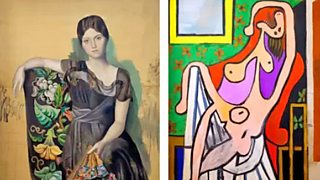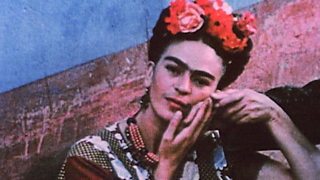About the Royal Collection season
3 January 2018
A major partnership between the ±«Óãtv and Royal Collection Trust, the Royal Collection Season reveals the fascinating history of one of the most important art collections in the world. It tells the stories behind the masterpieces and also some of the lesser-known works of art.
±«Óãtv One - The Coronation
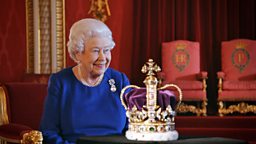
As part of the Royal Collection Season across ±«Óãtv television and radio, , an hour-long film revealing the compelling story of the Crown Jewels and the ancient ceremony for which they are used.
I've seen one Coronation, and been the recipient in the other, which is pretty remarkable.Her Majesty Queen Elizabeth II
As part of the film, to mark the 65th anniversary of Her Majesty The Queen's Coronation, The Queen shares memories of the ceremony, as well as that of her father, King George VI, in 1937. The Crown Jewels, which form part of the Royal Collection, consist of 140 items and contain 23,000 precious stones. These sacred objects form the most complete collection of royal regalia in the world.
Exploring the role and symbolic meaning of the Crown Jewels in the centuries-old ceremony, The Coronation shows these objects of astonishing beauty in new high-resolution footage. The film tells the extraordinary story of St Edward’s Crown, which was destroyed after the English Civil War and remade for the Coronation of Charles II in 1661. It has only been worn by Her Majesty once, at the moment she was crowned.
On 2 June 1953, on one of the coldest June days of the century and after 16 months of planning, The Queen set out from Buckingham Palace to be crowned at Westminster Abbey, watched by millions of people throughout the world. A ceremony dating back more than a thousand years was to mark the dawn of a new Elizabethan age.
Viewing both private and official film footage, The Queen recalls the day when the weight of both St Edward’s Crown and the hopes and expectations of a country recovering from war were on her shoulders, as the nation looked to their 27-year-old Queen to lead them into a new era.
In the film, The Queen says: “I've seen one Coronation, and been the recipient in the other, which is pretty remarkable.”
For audiences unfamiliar with the story of the Crown Jewels and the regalia, the film explains their contemporary relevance to the UK as a nation and to the enduring purpose and the work of monarchy. They are symbols of the relationship between the Sovereign and the people, and the duties and responsibilities of leadership.
The film also features eyewitness accounts of those who participated in the 1953 Coronation, including a maid of honour who nearly fainted in the Abbey, and a 12-year-old choirboy who was left to sing solo when his overwhelmed colleagues lost their voices.

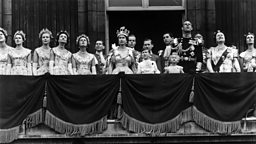
±«Óãtv Four - Art, Passion & Power: The Story of the Royal Collection

The Royal Collection is one of the most important and largest art collections in the world. Containing over a million works, it not only covers all aspects of the fine and decorative arts, but is also a personal record of the tastes and passions of kings and queens over the last 500 years.
Andrew Graham-Dixon selects some of the most spectacular works of art from this vast collection, which includes world-famous masterpieces by Van Dyck, Rembrandt, Canaletto and unrivalled collections of exquisite drawings by Holbein and Leonardo da Vinci.
Forty years since the story of the Royal Collection was last told so extensively on television, this brings the many treasures of the Collection to screens. Andrew Graham-Dixon selects some of the most spectacular works of art from this vast collection, as well as some of the lesser-known objects, as he visits royal residences, museums and galleries across the UK.
This is a collection that includes world-famous masterpieces by Van Dyck, Rembrandt, Canaletto and unrivalled collections of exquisite drawings by Holbein and Leonardo da Vinci.
From grand sculpture and some of the most remarkable furniture ever made to Tudor miniatures and the extravagant creations of Fabergé, Andrew Graham-Dixon will explain what the objects meant to the artists who created them and to the royal collectors who acquired them. For centuries, the Royal Collection has helped the monarchy to perform its duty while also projecting its tastes, priorities and concerns.
In episode four of the series, Andrew Graham-Dixon interviews The Prince of Wales about The Prince's role as Chairman of The Royal Collection Trust, the charity responsible for the care, conservation and display of the Collection, and examines two of His Royal Highness's recent commissions of portraits of World War Two veterans.
±«Óãtv Two - Charles I's Treasures Reunited

In this , presenter Brenda Emmanus explores the Royal Academy’s landmark exhibition Charles I: King and Collector, organised in partnership with Royal Collection Trust.
Brenda Emmanus will unpack the stories behind the works in Charles I's collection - including by artists such as Dürer, Rubens, Titian and Holbein.
For the first time since the 17th century, and to mark the 250th anniversary of the Royal Academy in 2018, much of Charles I’s extraordinary art collection will be reassembled and displayed at the Royal Academy in London.
The exhibition will include more than 90 works of art from the Royal Collection. With the help of art historians, as well as those who have worked with galleries and museums across the world to bring this extraordinary collection back together, Brenda will unpack the stories behind the works in Charles I's collection - including by artists such as Dürer, Rubens, Titian and Holbein.
She will tell the incredible story of how it was amassed by Charles I and then dismantled by Oliver Cromwell, and trace the King’s motivation in creating such an outstanding art collection.
±«Óãtv Radio 3 - The Early Music Show

Lucie Skeaping presents a concert recorded in the Grand Reception Room at Windsor Castle, including performances on historic instruments held in the Royal Collection.
- Flautist Ashley Solomon will perform on a , dating from c.1760;
- Chi-Chi Nwanoku will demonstrate the early 19th-century double bass made by Vicenzo Panormo and possibly used by Queen Victoria’s private band;
- And keyboard player Julian Perkins will play the built by Barkat Shudi in 1740.
The Early Music Show
-
![]()
Download explorations of early music introduced by Lucie Skeaping.
±«Óãtv Radio 4 - Stories from the Royal Collection
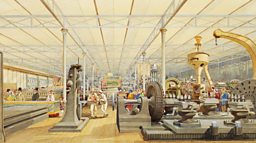
Dr Amanda Foreman explores some of the extraordinary stories behind works of art in the Royal Collection through documentary material from the Royal Archives, including how Charles II attempted to reinstate the great losses to his father’s unparalleled art collection, once the monarchy had been restored following the Civil War.
Among the fascinating objects explored are the satirical prints by Thomas Rowlandson of the future George IV, who secretly sent an eminent violinist (who later would become Master of Music to the King) to intervene with the publishers and buy up the complete print run and original plates to try to stifle criticism.
Foreman reveals just how instrumental Prince Albert was in motivating the minds behind the Great Exhibition of 1851, the world's first fair of arts, crafts and manufacturing that put British technological pre-eminence on view to over six million visitors from across the globe. She also examines Queen Victoria’s notebook, containing the details of her first State Visit to meet Napoleon III in France – a country that only 40 years earlier was Britain’s deadliest foe.
±«Óãtv Local Radio

±«Óãtv Local Radio
±«Óãtv Local Radio stations across England will be talking to Royal Collection Trust curators, who will tell listeners about the objects from the Collection on display close to where they live, and how they can search the Collection online to discover other items that have links with their area.
Related Links
Royal Collection season highlights
-
![]()
Welcome to the breathtaking Royal Pavilion in Brighton.
-
![]()
One of Queen Victoria's more macabre commissions revealed.
-
![]()
An exhibition reunites the treasures amassed by Charles I for the first time in 370 years.
-
![]()
How Charles II, the 'Merry Monarch', overruled austerity to project power through art.
-
![]()
What the Coronation Regalia tell us about the country's history.
-
![]()
This extraordinary work of Mughal painting was acquired by George III.
-
![]()
An incredible suit of armour created for Henry, Prince of Wales.
-
![]()
Andrew Graham-Dixon views drawings by da Vinci that have been lost for centuries.
More from ±«Óãtv Arts
-
![]()
Picasso’s ex-factor
Who are the six women who shaped his life and work?
-
![]()
Quiz: Picasso or pixel?
Can you separate the AI fakes from genuine paintings by Pablo Picasso?
-
![]()
Frida: Fiery, fierce and passionate
The extraordinary life of Mexican artist Frida Kahlo, in her own words
-
![]()
Proms 2023: The best bits
From Yuja Wang to Northern Soul, handpicked stand-out moments from this year's Proms
